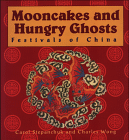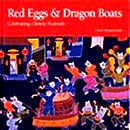 |
Welcome to the Bookstore Featured Book  Marco Polo and the Discovery of the World: Did Marco Polo Make it All Up? By John Larner (Yale University Press, 288 pages, 1999) Amazon.com Price: $20.97 buy it By CAI MALI Every schoolchild knows that Marco Polo had something to do with firing up the early Western imagination of China with his tales of travel through the Far East. But Sinophiles have gone searching, sometimes in vain, for traces in Marco's accounts of Khublai Khan's vast empire of the China and Chinese they might recognize. Scholars have been especially preoccupied recently with questions and doubts - about the extent to which the accounts have been fictionalized, some going so far as to suggest that Marco never made it as far as China in the thirteenth century, and that the Book of Marco Polo is completely fraudulent. He did not seem to have learned Chinese in his 24 years of travels in the area, nor from his appointment as a civil servant in the service of the Great Khan's empire. And he does not appear in any Chinese accounts of the era. Yet his accounts exhibit a deep familiarity with the organization, government, local products, provincial borders and general geography of a world that very few people at the time could know about. What are we to make of these perplexing contradictions? Part Mythology John Larner, in Marco Polo and the Discovery of the World, has written perhaps the best argument yet that neither Marco's enduring (and arguably undeserving) fame as a travel-writer, nor the authenticity of the stories themselves, matter as much as the real and more important contribution of this book to European geography and exploration. This is a book about a book, its history and its impact. Those who seek to understand the phenomenon and enduring legacy of Marco Polo will find much rewarding material here. This is not, however, a book about China or China readers. Marco Polo's 'Book' is not so much about China either; Larner describes one version in which only about one third of the pages are devoted to China. Nor is Larner's book even about Asia per se. While mainly about the impact of Marco's work and its dissemination and influence in Europe, it is an important part of the great, long story of East and West. As Larner points out, and as any reader who has ventured into Marco's 'adventures' will tell you, it is not 'travel-writing' as we usually know it. It is part-catalogue, part-anecdotal, part-mythology, part-epic, reflecting, in Larner's estimation, attempts by Marco's collaborator - his fellow prisoner in Genoa, Rustichello da Pisa, a talented raconteur - to add life to the accounts of the more practical-minded, information-oriented Marco. Readers of these tales are often quickly overwhelmed by the abundance of detail and confusing array of places and names, rewarded occasionally by remarkable and exotic, if not often amusing detail. Good Literature? If Marco's book does not measure up to the standards of good literature, should it not at least be measured by accuracy? Larner, who believes that Marco did travel to Cathay, downplays the importance of authenticity. When considered in its historical and cultural context, it seems clear that arguments over the truth of some of the accounts are pointless. As Larner points out, the early manuscripts of the book that do remain (around 150), all vary, and some by quite a lot. Some of the details in subsequent copying and translations of the text undoubtedly were embellished or censored to fit the prevailing political or religious climate. The seemingly exotic behavior of non-Christians was presented either in a more positive, or negative light, depending on the scribe (usually a monk) and the intended readership. So how should Marco Polo's contribution be understood? Larner eloquently makes the case: "This book has to be thought of, judged, as a geography and neither a work of anthropology nor a travelogue. In this respect, the fact that Marco had wide-angle lens vision, that his close-ups generally lacked all the intensity found in the reports of the friars [who travelled to Asia before him and wrote about it] were positive advantages. ... For the supreme strength of the Book lies in its organization, its steady progress, people by people, province by province, town by town, each with its own peculiarities, distinguished. Never before or since has one man given such an immense body of new geographical knowledge individually to the West."
Larner's own contribution is soberly to investigate the book's impact on Europe, on mapmakers, and the European worldview, and its indirect influence on Columbus. Professor Emeritus of History at the University of Glasgow, Larner has attempted to reach beyond the academic world of Polo scholars to a broader readership. In this he has not entirely succeeded; many historical references go unexplained for the uninitiated. Yet the striking color plates of illustrations and maps from the Middle Ages and Early Renaissance lift this book well above the usual academic study.
Also included are three festivals that do not originate with the lunar calendar: Clear Brightness Holiday (or grave-sweeping day, a day to honor ancestors, picnic, and fly kites); Red Egg and Ginger Party (when a new baby is named and welcomed); and the Dragon Boat Festival (with races to commemorate the ancient poet Qu Yuan). This delightful book offers simple descriptions of the background and special significance of Chinese customs, folk tales, and easy recipes for dishes such as long life noodles and dragon boat dumplings. Young readers will learn about the animals of the Chinese zodiac and the traits associated with them; the role of the Kitchen God at Chinese New Year (he travels up to Heaven to report on families' good and bad deeds), and the story of the hungry river dragon. The kids will also discover why people eat fish and melon and lotus seeds during the Chinese New Year festival (their names all sound like other words meaning plenty -- as in plenty of money, luck, and children); why tiger shoes for babies have eyes (they guard little ones from tripping as they learn to walk); and why you'll see symbols of creepy critters -- snakes, lizards, frogs, scorpions, and centipedes -- decorating all sorts of things during the Dragon Boat Festival (in traditional China, people wore amulets of the "five poisons" to protect them from danger and disease in the steamy weather at this time of year). Richly illustrated with Chinese folk art depicting farm life and scenes of village celebrations, the book is also sprinkled with beautiful examples of Chinese characters and couplets. Children of all ages will be enchanted by the pictures. Children of seven and above will be able to follow the text, which is both educational and lots of fun.
Also by Carol Stepanchuk for adult readers:
More surprising, the Allies and the Axis powers spent as much time spying on each other as they did on the enemy. Britain wanted to avoid dragging Japan into the larger conflict, so the instructions given to British citizens living in Shanghai were never exact in stating what specific acts constituted collaboration. Shanghai therefore continued to do business as usual with the Japanese even after the bombing of Pearl Harbor, when war was officially declared. Bernard Wasserstein's new book, "Secret War in Shanghai," takes a detailed and often chilling look at this cloak-and-dagger Shanghai of the 1930s and early 40's. Incredibly, the book casts the city in its pre-Liberation days in even darker tones than its stereotype as a pit of international intrigue, gambling, seamy sex and drug smuggling. Sexual Habits The book achieves this, first, by documenting acts of espionage carried out by the various powers in the International Settlement that is nothing short of shocking. This was made easier for the author by the fact that the Shanghai Municipal Police, a largely Anglo-Saxon coalition empowered to keep order in the Settlement, were scrupulous record keepers. They documented every scrap of information ever gathered on their subjects, from their sexual habits and personal histories to full lists of their known and suspected involvements. Wasserstein is utterly balanced in his reporting, with the upshot that no sector of Shanghai's international community is excused from their nefarious activities or shown favor. If the reader begins to sense, say, that the British are getting away easily, that is just about the time the author brings out documented examples of British incompetence and treachery. All the foreign communities in Shanghai - the French, Germans, Americans, and Japanese - commit the same sorts of crimes, treating their concessions like little fiefdoms. Bogus Aristocrat The book paints compelling individual portraits of charlatans, murderers, and thieves. There's Eugene Pick, the Russian-born gangster who collaborates with the Japanese and, when not spending his evenings at the theater, is conspiring to have his rivals bumped off. "Count" du Berrier is a bogus aristocrat and genuine arms dealer available to the highest bidder. "Princess" Sumaire, another false member of a royal family, is a social-climbing Indian imposter who lived the high life and traded sex for influence, first among Western expatriates, and later, among the Japanese. Sandwiched between these life stories of intrigue, "Secret War" offers an account of expatriate life in Shanghai that is amply documented at a rare level of detail. The description of Shanghai's various newspapers and radio stations operated by the Settlement's nations and entrepreneurs is especially fascinating. Missing from this otherwise fine work of research is a map of old Shanghai that would have been helpful. Without it, the reader has no idea which concessions abutted the others, or the relation of the Chinese portions of Shanghai to the International Settlements. Wasserstein's tendency to use French and German phrases without offering a translation is also irksome. Aside from these niggles, "Secret War in Shanghai" is gripping non-fiction, with a novel-like narrative that's all too true.
Available also from Amazon.com
|
Business Section The business section of our bookstore is open, with our reviews of several recommended books and many other suggested titles. Notable  China Wakes A vivid and thoughtful portrait of China by a Pulitzer Prize- winning husband-and-wife team of New York Times correspondents formerly in Beijing.  Consumer Revolution A fascinating overview of some of China's major consumer trends.  Mooncakes & Hungry Ghosts Explores food, costumes, customs, performances and symbolism of Chinese festivals. |
|||||
Bookstore Sections: Business Home | News | Trade | Finance | InfoTech | Leisure | Shop |
||||||
| ©1999 Virtual China, Inc. All rights reserved. | ||||||


